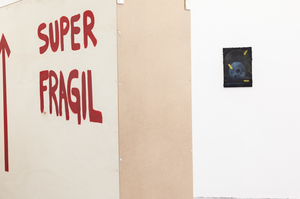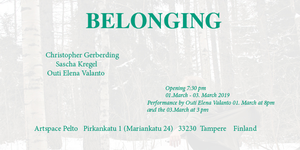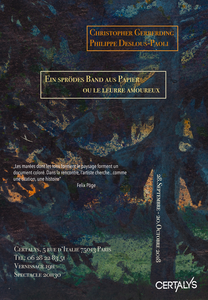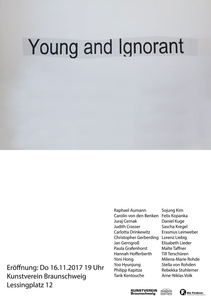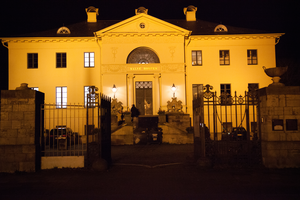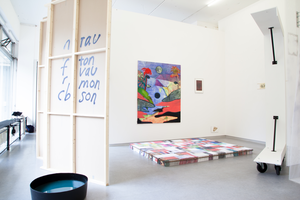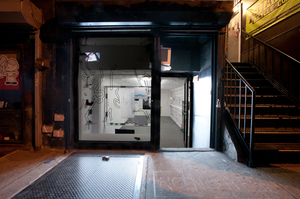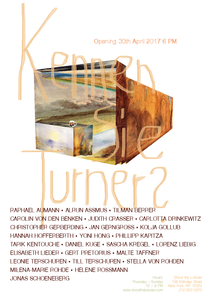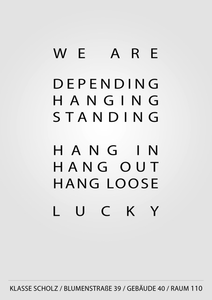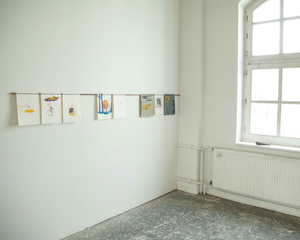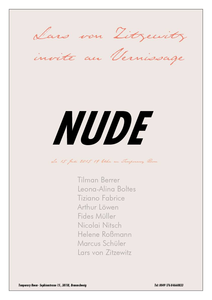Exhibitions
Where do we go ?
The act of contemplation supposes the acceptance of the feeling of lostness. For one to wander in its own psyche, one must accept renouncing the most familiar paths to engage in the unknown.
Christopher’s art is a painting of the search. He shows us, not the abyss or the infinite that one contemplates, but the very feeling of contemplating those. Through dark, pathless forests too landless seas along a blind road, the wanderer seems still in their wake, like a ship slowly drifting into the night.
Whence one comes does not matter any more than where one goes: the act of going from the unknown to the unexpected is the only relevant notion. One is a watchman, looking forward with apprehensive patience.
In what seems to be an endless night, light is scarce and far away, but always bright. An uncertain purpose, the wanderer being left to decide if it is prompt lightning or the sun of a new dawn, those who choose the latter committing an act of faith.
Ghostly, lively colored figures sometimes amble around, like a hallucination, or a cryptic sign. Once the mind reflects over its meaning, the form acquires one. What makes the difference between reflecting over a sign which meaning is indecipherable, and over a meaningless sign? One’s sanity, the limits of which are blurred here.
His drive is about faith and dreams, longing for meaning.
It shows us the bizarre thrill that lives within the still waters of contemplation.
And it is from this struggle that art emerges, a nightmarish forest of signs hosting it. It is in the midst of it all, that appears the first brushstroke of a dream.
Philippe Deslous Paoli
Belonging
Dance encounters sculpture, sculpture encounters sound and sound encounters painting.
The audio installation generates an imaginary field, which creates a soundscape, where the movements of the single sound elements and the movements of the observer, dancer or visitor are building an unhierarchic nonideological system or home.
Choreographer and Contemporary Dancer Outi Elena Valanto, Sound Artist Sascha Kregel and Painter and Sculptor Christopher Gerberding explore the physical and subjective state of belonging in space, in a landscape or in a society, familiar structure. It observes how the emotions, memories, and senses affect the perception of home.
„When light enters a space, space begins to exist, from an unknown to a known state of being. What if feelings and body are the real origins of the human being? Is the time the matter that revolutionizes the incognito space to be something familiar, a habitat?“
Outi Elena Valanto
This piece offers perspective where movement and sensitivity can embody the origin land. Perhaps belonging is longing something non-material to a non-territory. A state that is a product of imagination. With dance, soundscape, painting, and installation this piece examines the eternal inquiries of humanity and provides a platform for the audience to individual reflection.
On the blue Sky and the Stars
Meinem verehrungswürdigen Jakob Burckhardt.
Das war der kleine Scherz, dessentwegen ich mir die Langeweile, eine Welt geschaffen zu haben, nachsehe.
Nun sind Sie - bist Du - unser grosser grösster Lehrer: denn ich, zusammen mit Ariadne, habe nur das goldne Gleichgewicht aller Dinge zu sein, wir haben in jedem Stücke Solche, die über uns sind...
Dionysos
[...Nietzsche]
